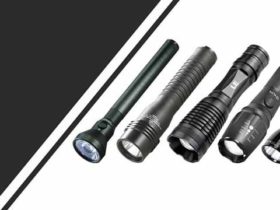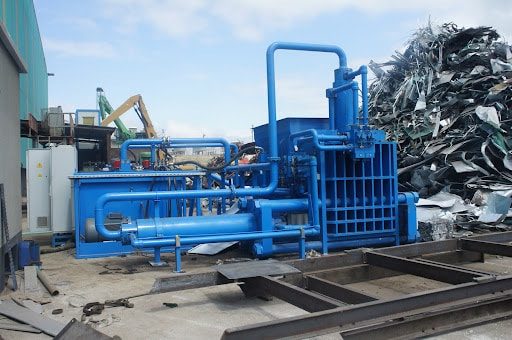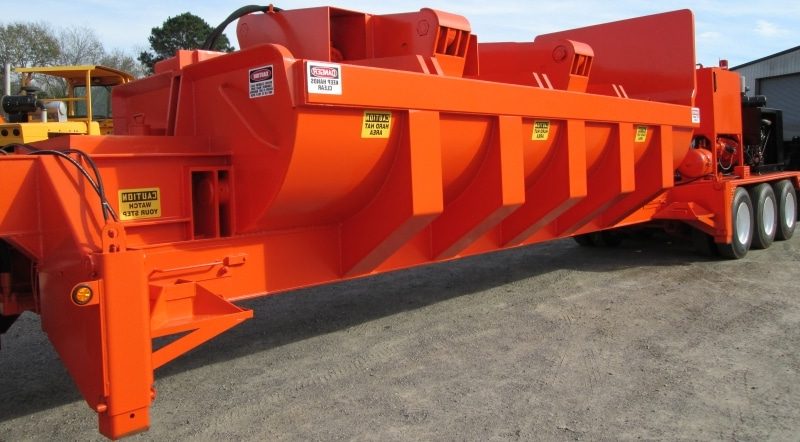Scrap metal balers are indispensable tools in the recycling industry, facilitating the efficient processing and transportation of scrap metal. By compressing metal scraps into compact, manageable bales, these machines reduce the volume of waste and enhance the profitability of recycling operations.
As environmental concerns and the push for sustainable practices continue to grow, the role of scrap metal balers becomes increasingly significant.
Contents
Importance of Scrap Metal Balers
Scrap metal balers serve a crucial function by allowing businesses to transform voluminous and unwieldy metal scraps into dense, uniform blocks. This transformation is beneficial for several reasons:
- Reduced Storage Space: Compressed bales take up significantly less space, which is beneficial in facilities where space is at a premium.
- Ease of Transportation: Baled scrap is more cost-effective because more material can be shipped in a single load.
- Increased Market Value: Baled scrap often commands a higher price on the market due to its uniformity and ease of handling, making it more desirable to buyers.
Choosing the Right Baler
Selecting the appropriate baler is critical to maximizing efficiency and meeting the specific needs of a recycling operation. Various balers are suited to different materials, volumes, and operational environments. Understanding these distinctions can help businesses make informed decisions that align with their operational goals and budget constraints.
The Basics of Scrap Metal Balers
Scrap metal balers are specialized machines that compress metal scraps into compact, manageable bales. These bales are easier to handle, transport, and store, making recycling more efficient and cost-effective. Understanding scrap metal balers’ basic operation and functionality is essential for anyone in the recycling industry.
Definition and Functionality of Scrap Metal Balers
A scrap metal baler is a machine that uses hydraulic or mechanical force to compress metal scraps into dense, smaller bales. These bales can then be easily transported, stored, or processed further. The primary function of a baler is to reduce the volume of scrap metal, which in turn reduces transportation costs and storage requirements.
How Scrap Metal Balers Work
Scrap metal balers generally operate using one of two mechanisms:
- Hydraulic Balers: These are the most common balers, and hydraulic cylinders apply force to compress the scrap metal. They are powerful and efficient, handling various metal types and sizes.
- Mechanical Balers: These balers use gears and levers to compress the metal. While less common than hydraulic balers, they are still used for specific applications where they perform effectively.
Components of a Scrap Metal Baler
- Feeding Chamber: The area where scrap metal is loaded for compression.
- Compression Chamber: The space where the metal is compressed into a bale.
- Hydraulic or Mechanical Press: The system that applies force to compress the metal.
- Binding System: Many balers include a mechanism to bind the compressed bale with wire or another material to hold it together.
- Control Panel: Used to operate the baler, set parameters, and ensure safe functioning.
Role of Balers in the Recycling Process
Scrap metal balers play a crucial role in the recycling process:
- Efficiency and Speed: They significantly increase the efficiency and speed of recycling operations by quickly processing large volumes of scrap metal.
- Economic Benefits: By reducing the volume of scrap metal, balers decrease transportation and storage costs, making recycling operations more profitable.
- Environmental Impact: Balers support environmental sustainability by facilitating the recycling of metal, which reduces the need for virgin material extraction and lowers greenhouse gas emissions.
Types of Scrap Metal Balers
Scrap metal balers are classified into various types based on their design, functionality, and the specific applications they are suited for. Every kind of baler has its unique features and benefits, making it essential to understand the differences to select the most appropriate one for your recycling needs.
1. Single Ram Balers
- Description: Single ram balers, or closed-door balers, use one hydraulic ram to compress the metal. This type is straightforward in its mechanism, with the metal pressed against a fixed wall or door.
- Uses: Ideal for processing lighter, less dense metals or smaller volumes of scrap. They are commonly used in smaller recycling facilities.
- Benefits: Lower cost and more straightforward maintenance due to fewer moving parts. They are also easier to operate, making them suitable for operations with limited technical expertise.
2. Double Ram Balers
- Description: Double ram balers have two rams that work independently to compress the scrap metal. One ram acts vertically and the other horizontally, providing a more thorough compression.
- Uses: Best suited for denser and heavier metals that require strong compression forces. They are often used in more extensive, industrial-scale recycling operations.
- Benefits: Handling a more comprehensive range of materials and producing denser, more compact bales. They generally have a larger loading aperture, allowing for larger pieces of scrap metal.
3. Horizontal Balers
- Description: Horizontal balers compress scrap from the side and typically have an automated tying system that binds the bales. They can be either manual-tie or auto-tie, with the latter providing fully automatic bale tying.
- Uses: Horizontal balers are ideal for high-volume recycling operations and are commonly used for not just metal, but also paper, cardboard, and plastic.
- Benefits: They offer continuous operation and can be integrated into production lines for streamlined processing. Auto-tie systems significantly reduce labor requirements.
4. Vertical Balers
- Description: In vertical balers, scrap is loaded into a vertical chamber, and a downward-moving ram compresses the material. They are more compact and generally have a smaller footprint.
- Uses: Suitable for small to medium-sized operations with limited space. They are perfect for baling moderate amounts of scrap metal, paper, or fabric.
- Benefits: Vertical balers are typically less expensive than horizontal balers and are easier to install and operate in confined spaces.
5. Automatic and Semi-automatic Balers
- Description: These balers automate various degrees of the baling process, from feeding to tying, which significantly improves efficiency.
- Uses: Automatic balers are used in large-scale operations where efficiency and high throughput are necessary. Semi-automatic models are suited for medium-scale operations that benefit from some level of automation.
- Benefits: They dramatically reduce labor costs and improve the consistency and quality of the bales produced. Automatic models are particularly effective in high-volume environments where manual operations would be impractical.
Choosing the Right Baler for Your Needs
Selecting the appropriate scrap metal baler is crucial for optimizing your recycling process, ensuring efficiency, and maximizing profitability. Various factors must be considered when choosing a baler, from the type and volume of materials you plan to process to the space available and your budget constraints.
Here’s a detailed guide on choosing the suitable baler for recycling.
1. Assess Your Material Type and Volume
- Type of Scrap: Determine the types of metals you will be processing. Different balers are suited to different materials—some are better for light aluminum or tin, while others are designed for heavier metals like steel.
- Volume: Estimate the amount of material you will process daily or monthly. High-volume operations will benefit from a more robust, automatic baler, whereas smaller volumes might be handled effectively with a single ram or vertical baler.
2. Space Considerations
- Facility Layout: Evaluate the available space in your facility. Horizontal balers typically require more floor space, while vertical balers are more compact and better suited for tight spaces.
- Logistics: Consider the logistics of feeding the baler and removing bales. Ensure there is adequate room for loading materials and maneuvering finished bales.
3. Efficiency and Throughput
- Throughput Needs: Look at the baler’s cycle times and output specifications. A higher throughput baler might be necessary to quickly process large amounts of scrap.
- Operational Continuity: An automatic baler with high reliability and fast processing time may be essential for operations running continuously without downtime.
4. Budget and Cost of Ownership
- Initial Investment: Determine your budget for the initial purchase. While more sophisticated balers are more expensive, they may offer savings in labor and maintenance over time.
- Maintenance Costs: Consider the long-term maintenance costs. Balers with more complex mechanisms, like double ram balers, might have higher maintenance expenses than simpler models.
5. Operational Flexibility
- Material Flexibility: Some balers can handle a variety of materials beyond metal, such as cardboard and plastic. If your operations require versatility, consider a baler that can process different types of recyclables.
- Expandability: If you anticipate growth in your operations, look for a baler that can scale with your needs, either through higher capacity models or modular designs that can be upgraded.
6. Environmental and Safety Features
- Safety Mechanisms: Safety is paramount in recycling operations. Choose a baler with comprehensive safety features like emergency stops, safety interlocks, and user-friendly controls.
- Environmental Compliance: Ensure the baler meets local environmental regulations concerning noise, emissions, and energy consumption.
7. Manufacturer’s Reputation and Support
- Vendor Reliability: Select a baler from a reputable manufacturer known for quality and reliability. This can ensure fewer breakdowns and better performance.
- After-Sales Service: Consider the manufacturer’s after-sales service and availability of spare parts. Good technical support and quick parts availability can significantly reduce downtime.
Conclusion
Scrap metal balers are essential in the recycling industry and critical in processing, efficiency, and sustainability. Understanding the different types of balers available and their specific uses allows businesses to make informed decisions that enhance operational effectiveness and align with their recycling goals.























Leave a Reply
View Comments